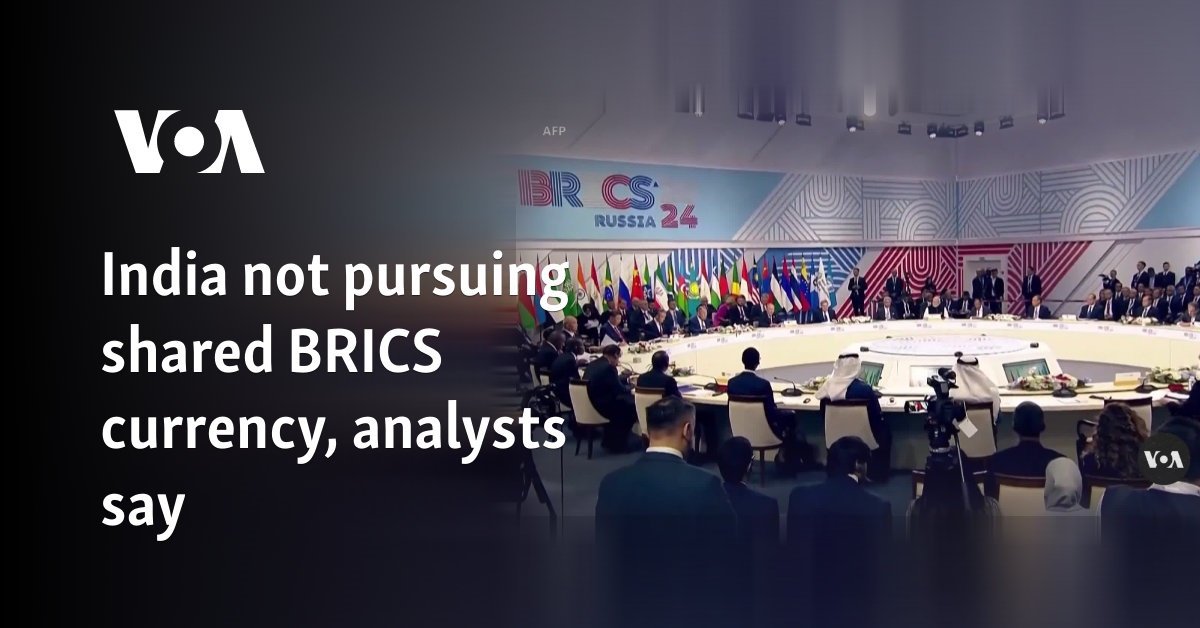Modi’s Strategic Gamble: Why India Resists the BRICS Currency Push
The BRICS consortium—comprising Brazil, Russia, India, China, and South Africa—has been deliberating the creation of a unified currency aimed at reducing dependence on the U.S. dollar in international trade. Spearheaded by Russia and China, this initiative seeks to counteract the dollar’s global dominance, mitigate the impact of Western sanctions, and foster greater economic independence among BRICS nations.
While the proposal has gained traction among certain members, India, under the leadership of Prime Minister Narendra Modi, has taken a cautious stance, prioritizing national interests and the strength of the Indian rupee.
India’s Cautious Stance: Balancing Sovereignty and Regional Integration
External Affairs Minister S. Jaishankar has reiterated India’s position against adopting a common BRICS currency. In a statement in July 2023, he emphasized that India’s focus remains on strengthening the rupee’s international standing rather than supporting a shared currency.
India’s concerns are rooted in:
- Monetary Sovereignty: Adopting a BRICS currency could dilute India’s control over its monetary policy.
- Economic Disparities: The dominance of China within BRICS raises apprehensions about equitable decision-making.
- Geopolitical Balancing: India’s strategic partnerships with the U.S. and other Western nations necessitate caution in aligning with initiatives perceived as anti-dollar.
India’s reluctance also reflects underlying economic vulnerabilities:
- Trade Deficit with China: India’s significant trade imbalance with China undermines its negotiating power within the bloc.
- Reliance on the Dollar: Despite calls for de-dollarization, over 86% of India’s global trade remains dollar-denominated, highlighting limited progress in promoting the rupee.
- Institutional Gaps: India’s financial systems and regulatory frameworks are not yet prepared to support large-scale currency integration.
Critics argue that India’s hesitation to engage actively with the BRICS currency signals a missed opportunity to assert leadership within the bloc. With its growing influence in the Global South, India could have played a pivotal role in mediating competing interests and shaping the initiative.
Modi’s Missed Strategic Opportunity
Prime Minister Modi has positioned India as a champion of developing nations through platforms like the G20 and BRICS. However, India’s cautious stance on the BRICS currency undermines this narrative. By not proactively engaging, India risks ceding influence to China, which has greater economic clout within the bloc.
Domestic political priorities and nationalist rhetoric are seen as additional factors that have constrained Modi’s government from embracing complex multilateral initiatives like the BRICS currency. This reluctance contrasts sharply with Modi’s assertive foreign policy in other areas, raising questions about India’s long-term global strategy.
Global Context: Trump’s Warnings and Dollar Dominance
Former U.S. President Donald Trump has been vocal against any moves to undermine the dollar’s dominance. In December 2024, Trump threatened to impose 100% tariffs on BRICS nations if they pursued a shared currency to replace the dollar.
Trump’s stance highlights the geopolitical stakes of the BRICS initiative, with the U.S. fiercely defending its financial hegemony. Modi’s alignment with U.S. interests in defense and trade may have further influenced India’s reluctance to antagonize Washington.
Implications for Global Trade and the Indian Rupee
The BRICS currency initiative has broad implications for global trade and India’s economic landscape:
Potential Benefits
- Reduced Dollar Dependence: A BRICS currency could stabilize the rupee by reducing demand for the dollar in intra-bloc trade.
- Lower Transaction Costs: Eliminating the need for dollar conversions would benefit Indian businesses.
- Enhanced Regional Trade: Greater trade with BRICS nations could bolster the Indian economy.
Potential Risks
- Loss of Sovereignty: Shared monetary policies could undermine India’s economic independence.
- Trade Imbalances: India’s trade deficit with China could widen under a shared currency system.
- Weakened Rupee Promotion: A BRICS currency could compete with the rupee for regional trade dominance.
The Road Ahead: India’s Strategic Imperatives
India’s cautious approach to the BRICS currency underscores the broader challenge of balancing national priorities with regional and global ambitions. Moving forward, India must:
- Address Economic Vulnerabilities: Strengthen exports, attract foreign direct investment, and reduce trade deficits.
- Assert Leadership within BRICS: Proactively engage in shaping the currency’s governance framework to protect its interests.
- Maintain Strategic Partnerships: Continue balancing ties with BRICS and Western allies, ensuring strategic flexibility.
The BRICS currency proposal represents a bold step towards de-dollarization and greater regional cooperation. However, its feasibility and implications for India are complex. While the initiative offers opportunities to reduce dollar dependence and enhance trade, it also poses risks to India’s monetary sovereignty and the rupee’s global standing.
Under Prime Minister Modi, India’s cautious stance reflects the delicate act of navigating domestic priorities, geopolitical alliances, and regional aspirations. As global economic dynamics evolve, India’s role in shaping the emerging financial landscape will determine its standing as a leader or a follower in the new world order.

